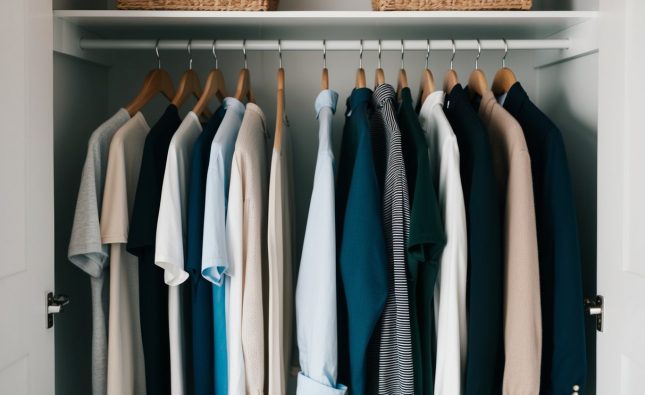
The debate between second-hand and new clothing options has become increasingly relevant in today’s fashion landscape. Both choices come with their own set of advantages and considerations, affecting sustainability, cost, and personal style. Choosing second-hand clothing can significantly reduce environmental impact while offering unique finds at more affordable prices.

Many shoppers are drawn to the thrill of discovery that comes with thrift shopping, where each piece has its own story. In contrast, new clothing often ensures the latest styles and trends, though it typically comes with a higher price tag. Understanding the benefits of each option can help individuals make informed decisions that align with their values and preferences.
As consumers become more conscious of their purchases, the question of whether to buy second-hand or new is not just about personal preference but also about contributing to a sustainable future. Exploring these options can reveal surprising insights into one’s wardrobe choices and their broader implications.
Benefits of Second-hand Clothing
Second-hand clothing offers several advantages that appeal to a variety of consumers.
Cost-Effective
Purchasing second-hand items can significantly reduce expenses. Often, prices are substantially lower than new clothing, allowing individuals to save money.
Unique Finds
Second-hand shops frequently offer a wide range of styles that may not be available in mainstream stores. This can lead to unique pieces that enhance personal style.
Environmental Impact
Choosing second-hand clothing can lessen the demand for new production. This helps reduce waste and promotes sustainability in the fashion industry.
Quality
Many second-hand garments are well-made, often from higher-quality materials. This can result in longer-lasting clothing items compared to cheaper, mass-produced alternatives.
Local Support
Buying from local thrift stores or charity shops can contribute to community support. Many of these organizations use proceeds to fund local programs and services.
Fashion Trends
Vintage clothing trends often emerge from second-hand options. Consumers can embrace current styles by mixing vintage pieces with new items in their wardrobe.
Second-hand clothing presents practical and sustainable choices for those looking to be budget-conscious while also making environmentally friendly decisions.
Advantages of Buying New Clothing

New clothing offers a variety of benefits that can appeal to many consumers.
1. Quality Assurance
New clothing often comes with guarantees regarding material quality and construction. Buyers can expect consistent standards in stitching, fabric integrity, and durability.
2. Latest Trends
New items feature the latest designs and styles. Fashion-forward individuals appreciate accessing current trends and seasonal collections directly from brands.
3. Tailored Shopping Experience
Shops and online retailers provide a structured shopping experience. Customers can easily browse by size, color, or style, simplifying the purchase process.
4. Availability of Sizes
New clothing typically offers a full range of sizes. This availability allows individuals to find the perfect fit without issues related to stock limitations.
5. Hygiene Concerns
Purchasing new clothing eliminates concerns regarding previous wear and hygiene. Many individuals prefer the assurance that comes with wearing items not previously used.
6. Returns and Exchanges
New clothing often comes with clear return and exchange policies. This policy allows customers to feel secure in their purchases, knowing they can change their minds if necessary.
7. Brand Recognition
Buying new allows individuals to align with brands they admire. This connection can enhance personal style and identity through recognized labels.
Considerations for Choice
Choosing between second-hand and new clothing involves several key factors.
Budget: Second-hand clothing is often more affordable. This can allow for a broader selection of styles within a limited budget.
Quality: New clothing typically comes with warranties and guarantees. In contrast, second-hand items may show signs of wear but can still be of high quality.
Sustainability: Second-hand shopping is more environmentally friendly. It promotes recycling and can reduce the demand for new textiles.
Style and Uniqueness: Second-hand clothing often offers unique pieces not found in mainstream stores. This can appeal to individuals seeking a distinctive wardrobe.
Fit and Sizing: New clothing usually follows standard sizing, which can be beneficial. However, second-hand items may vary widely in sizing and fit.
Availability: New clothing is generally more accessible, especially popular styles. Second-hand options depend on what’s available in the market.
Ethical Considerations: Purchasing second-hand can support local businesses and charities. New clothing purchases might contribute to fast fashion concerns.
When weighing these considerations, individuals should reflect on their personal values and priorities. Each choice comes with its own set of implications and advantages.












